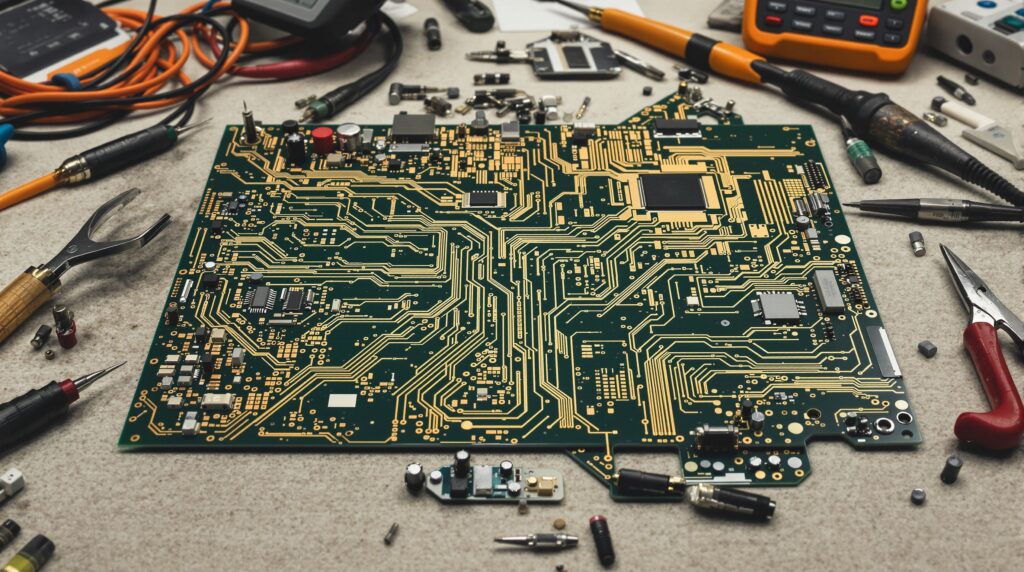Global AI Native Industry Insights – 20251114 – OpenAI | Google | OpenAI | more

Explore GPT-5.1 launch, DeepMind’s SIMA 2 debut, sparse circuits innovation, NotebookLM enhancement. Discover more in Today’s Global AI Native Industry Insights.
1. OpenAI Launches GPT-5.1: The Next-Gen Conversational AI
🔑 Key Details:
– GPT-5.1 Instant: Updated model with a warmer, more conversational tone, enhancing user engagement.
– GPT-5.1 Thinking: Now adapts reasoning time based on question complexity, providing clearer and faster responses.
– Customization: Introduces new tone presets for enhanced personalization in ChatGPT interactions.
💡 How It Helps:
– AI Developers: Improved models allow for adaptive reasoning and enhanced efficiency in building applications.
– Content Creators: Greater customization options support tailored communication styles for varied audience engagement.
– Marketers: Enhanced conversational abilities enable more effective customer interactions.
🌟 Why It Matters:
This rollout positions OpenAI at the forefront of conversational AI, enhancing user experience through personalized and intelligent interactions, reinforcing its competitive edge in the evolving AI landscape.
Read more: https://openai.com/index/gpt-5-1/
Video Credit: OpenAI (@OpenAI on X)
2. Google DeepMind Unveils SIMA 2: The Next Evolution in AI Agents for 3D Worlds
🔑 Key Details:
– Next-Generation AI: SIMA 2 enhances capabilities using DeepMind’s Gemini model, evolving from simple instruction-following to interactive engagement.
– Advanced Reasoning: The agent can now reason, converse, and self-improve, significantly advancing toward Artificial General Intelligence (AGI).
– High-Performance Generalization: SIMA 2 excels at performing complex tasks across unfamiliar environments, closing the gap in success rates with human players.
💡 How It Helps:
– AI Developers: This evolutionary step equips developers with a robust interactive AI capable of learning from dynamic environments, reducing manual intervention.
– Game Designers: Gamers can integrate SIMA 2 into their projects to enhance user experience, leveraging its ability to self-improve and adapt.
🌟 Why It Matters:
SIMA 2 represents a transformative leap in the development of interactive AI, emphasizing its significance in various fields such as gaming and robotics. Its ability to self-learn and adapt positions it competitively within the AI landscape, signaling a move towards more autonomous systems that can operate seamlessly in unpredictable environments.
Video Credit: Google DeepMind
3. OpenAI Explores Sparse Circuits for Interpretable Neural Networks
🔑 Key Details:
– OpenAI has developed a new training method for small AI models that makes their internal mechanisms easier for humans to understand.
– OpenAI introduces a new approach to interpretability by training sparse neural networks, where most model weights are set to zero.
– These sparse models form disentangled circuits that are easier to trace and understand, while remaining capable of completing tasks.
– The work focuses on mechanistic interpretability—reverse engineering the model’s internal computations at a granular level.
💡 How It Helps:
– AI Safety Researchers: Offers a clearer path to understanding how models arrive at outputs, helping detect unsafe or misaligned behaviors.
– Developers: Enables better debugging, model evaluation, and trust-building in AI applications.
– Interpretability Community: Provides empirical evidence that model simplicity can improve transparency without sacrificing functionality.
🌟 Why It Matters:
As AI models grow more powerful, understanding their internal logic becomes critical for safety and oversight. OpenAI’s sparse circuit research shows that by designing models to think in simpler, traceable steps, we can make progress toward interpretable, controllable systems. This work opens a potential path to building large-scale models whose behavior we can explain—and trust.
Read more: https://openai.com/index/understanding-neural-networks-through-sparse-circuits/
Video Credit: The original article
4. NotebookLM Adds Deep Research and Support for Sheets, Docs, PDFs, and More
🔑 Key Details:
– Deep Research Launch: NotebookLM now includes Deep Research, an AI agent that automates web-based research with structured reports and recommendations.
– Source Expansion: You can now upload and analyze Google Sheets, Word docs, images, PDFs from Drive, and Drive file URLs — in addition to existing formats.
– Continuous Workflow: Deep Research results can be saved into your notebook, allowing you to build rich knowledge bases without interrupting your process.
💡 How It Helps:
– Researchers: Automates the tedious parts of sourcing, summarizing, and citing, so you can focus on insights.
– Students & Writers: Upload spreadsheets, notes, reports, and even handwritten materials to unify your research in one place.
– Power Users: Easily mix multiple file types and Deep Research results to generate audio/video overviews or tailored outputs.
🌟 Why It Matters:
NotebookLM is transforming into an intelligent research assistant, not just a notebook. By automating high-quality source discovery and supporting real-world file types, it helps anyone — from students to professionals — scale their thinking and turn scattered materials into structured understanding.
Read more: https://blog.google/technology/google-labs/notebooklm-deep-research-file-types/
Video Credit: NotebookLM (@NotebookLM on X)
That’s all for today’s Global AI Native Industry Insights. Join us at AI Native Foundation Membership Dashboard for the latest insights on AI Native, or follow our linkedin account at AI Native Foundation and our twitter account at AINativeF.